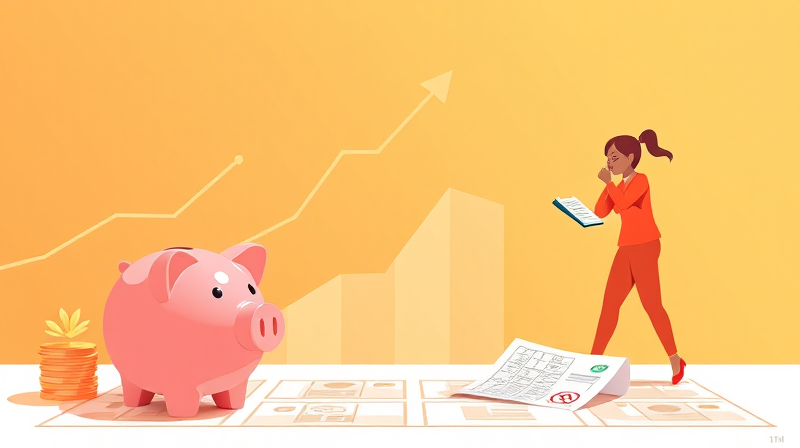Building a robust savings buffer is essential to achieving long-term financial security and peace of mind. In today’s dynamic economic environment, planning ahead and taking proactive steps towards creating a reliable savings cushion can empower you to face unexpected challenges with confidence. Whether you are just starting your savings journey or looking to optimize your current strategies, the following guidance will serve as an inspiring roadmap for you in 2025 and beyond.
A successful savings plan begins with establishing clear and achievable goals. Recognizing what you want to accomplish is the first step towards an organized and disciplined savings routine.
Set Clear Savings Goals
Defining specific, measurable targets for your savings endeavors will help you maintain focus and measure progress. Consider breaking down larger goals into smaller milestones; this not only makes the targets more manageable but also provides quick wins along the way. For instance, if you decide to create an emergency fund, set a target amount like $2,000 for short term needs or aim for $10,000 to support major financial decisions such as a down payment on a home.
This process of setting goals will help you allocate the right amount of time and resources. When goals are clear, every financial decision becomes part of a larger, strategic plan that adds up over time.
One of the best methods to ensure that your savings grow uninterrupted is to make the process automatic.
Automate Your Savings
Automating your savings removes the uncertainty of manual transfers and reduces the temptation to spend what you don’t see. Many banks and employers offer services that allow you to split your paycheck between checking and savings accounts automatically. By making saving a part of your routine, you are essentially paying yourself first. This simple but effective technique ensures that a certain percentage of your pay is always reserved for your future, regardless of fluctuations in your spending habits.
With the rise of digital banking, automating transfers is easier than ever, enabling you to focus on building your financial reserve rather than navigating cumbersome procedures.
Once you have automated contributions, it makes sense to explore where you can earn the best return on your money.
Utilize High-Yield Savings Accounts
High-yield savings accounts can significantly boost your overall savings by offering competitive interest rates. In 2025, many online banks provide annual percentage yields (APYs) ranging from 4% to 5%. This is far more attractive compared to traditional brick-and-mortar banks. By choosing a high-yield option, you ensure that your money works for you, growing steadily even while remaining secure and accessible.
High-yield accounts are an intelligent choice for maximizing returns without the risk typically associated with investment products.
In addition to choosing the right banking instruments, it is important to maintain an overview of your finances in daily life.
Create a Realistic Budget
A well-planned budget helps you understand exactly where your money is going. Many budgeting apps such as Mint, Rocket Money, or Simplifi can simplify this task, allowing you to track spending, set categories, and allocate funds towards savings. Consistent budgeting can lead to a habit of financial accountability. By reviewing your monthly expenses, you may even discover hidden opportunities for extra savings.
This might mean curbing spending in certain areas or prioritizing essential expenses such as housing, utilities, groceries, and key debt payments. Experts often recommend aiming to save up to 20% of your income if your situation allows. The goal is not only to live within your means but also to progressively improve your financial situation.
Alongside budgeting and automatic transfers, another pillar of financial resilience is the emergency fund.
Build an Emergency Fund
Creating an emergency fund is one of the most important safeguards against unexpected financial setbacks. Having 3-6 months’ worth of essential expenses reserved allows you to weather sudden changes without resorting to high-interest debt. This fund should prioritize vital costs such as rent or mortgage, groceries, utilities, and minimum debt payments. By consistently contributing towards this buffer, you are investing in your financial future.
The peace of mind that comes with an established emergency fund is priceless, offering a stable foundation during times of uncertainty.
Reducing monthly expenditures is another critical step in boosting your savings potential.
Trim Unnecessary Expenses
Reviewing your monthly bills and cutting down on recurring or extraneous costs can free up more resources for your savings endeavors. This may include canceling unused subscriptions, negotiating cheaper insurance premiums, or simply adopting a more frugal lifestyle. Dining out less frequently and embracing cost-effective alternatives for entertainment can also contribute significantly to a leaner budget.
Implementing simple adjustments now can have a profound effect on your savings over an entire year.
Beyond cutting costs, consider boosting your income to further strengthen your savings buffer.
Explore Additional Income Sources
In today’s flexible job market, exploring side hustles or freelance opportunities is a wise approach to increase your income. Even an extra $200 per month can add a considerable amount to your savings buffer over time. Whether it's freelancing, a part-time job, or selling products online, the additional income can accelerate your progress towards financial goals.
Diversifying your income streams not only increases financial security but also equips you with valuable skills and experiences.
Furthermore, leveraging the benefits of tax-advantaged accounts will help further maximize your saving efforts.
Leverage Tax-Advantaged Accounts
Tax-advantaged savings vehicles such as IRAs and 401(k)s offer significant benefits by reducing your taxable income and providing growth opportunities through compound interest. If your employer offers a 401(k) match, make sure to contribute enough to capitalize on this benefit. Taking advantage of these allocations can serve as free money and dramatically impact your long-term financial health.
Using these accounts wisely turns saving into an investment in your future, giving you a solid financial shoulder to lean on as you progress through life.
As circumstances change over time, it is critical to maintain flexibility in your savings strategy.
Regularly Review and Adjust
Setting periodic reviews of your financial situation can help you stay aligned with your goals. Schedule calendar reminders to assess your savings journey and adjust your strategy accordingly. Whether it’s an unexpected change in income or a new financial opportunity, regular reviews ensure that you remain on track to achieve a sustainable financial cushion.
Consistency and adaptability are key virtues in building and maintaining a reliable savings buffer. With ongoing assessment, you can fine-tune your actions to best suit your evolving priorities and financial landscape.
By integrating these strategies into your daily routine, you transform the daunting task of saving into a series of manageable, rewarding steps. Each action you take today plants a strong seed for a secure tomorrow, paving the way for a future free from financial stress and brimming with possibilities.
Ultimately, creating a reliable savings buffer is not just about the numbers in your bank account—it is a commitment to safeguarding your life against uncertainties and enhancing your well-being. Keep pushing forward with a clear plan, smart strategies, and unwavering determination, and watch as your financial health flourishes in the years to come.








